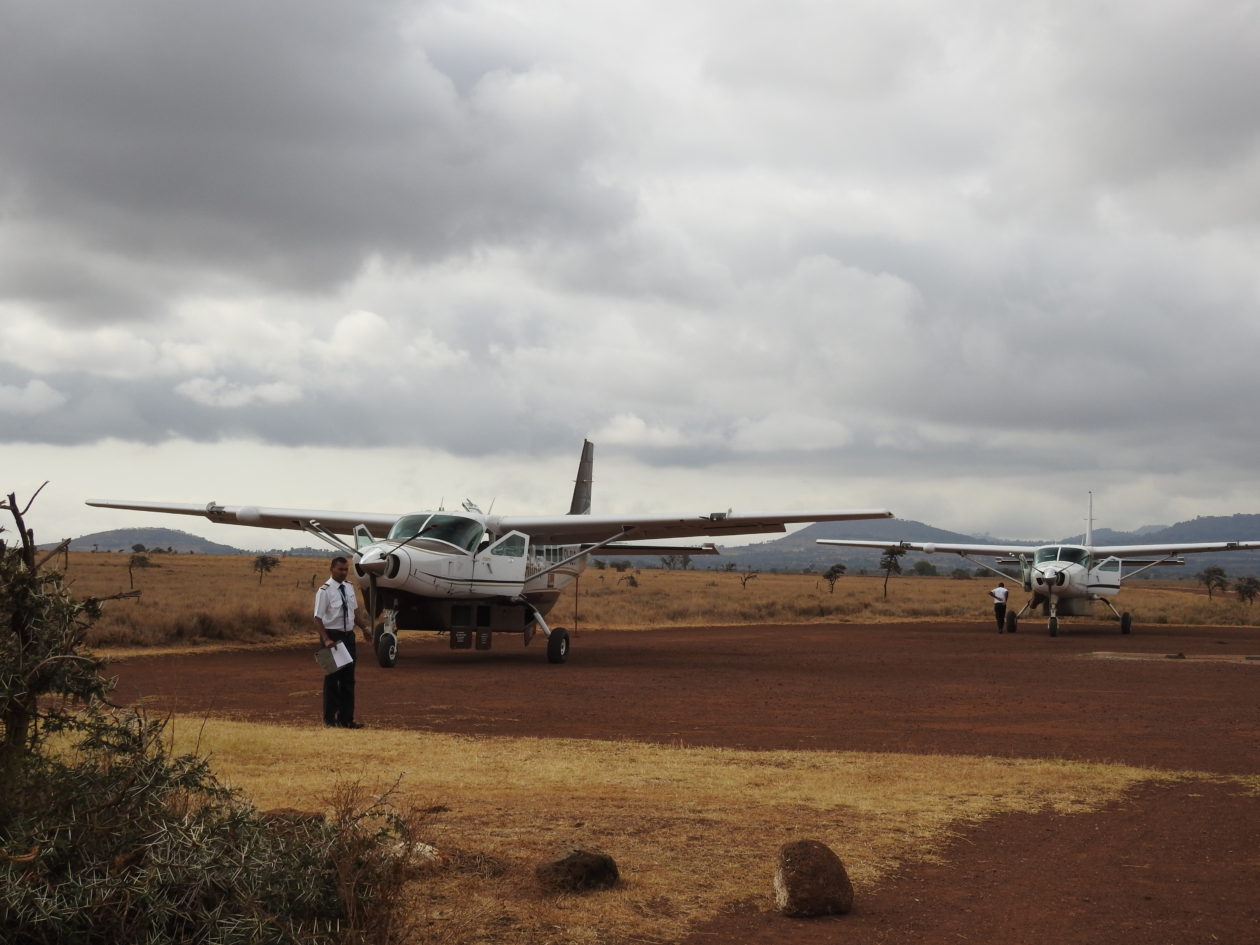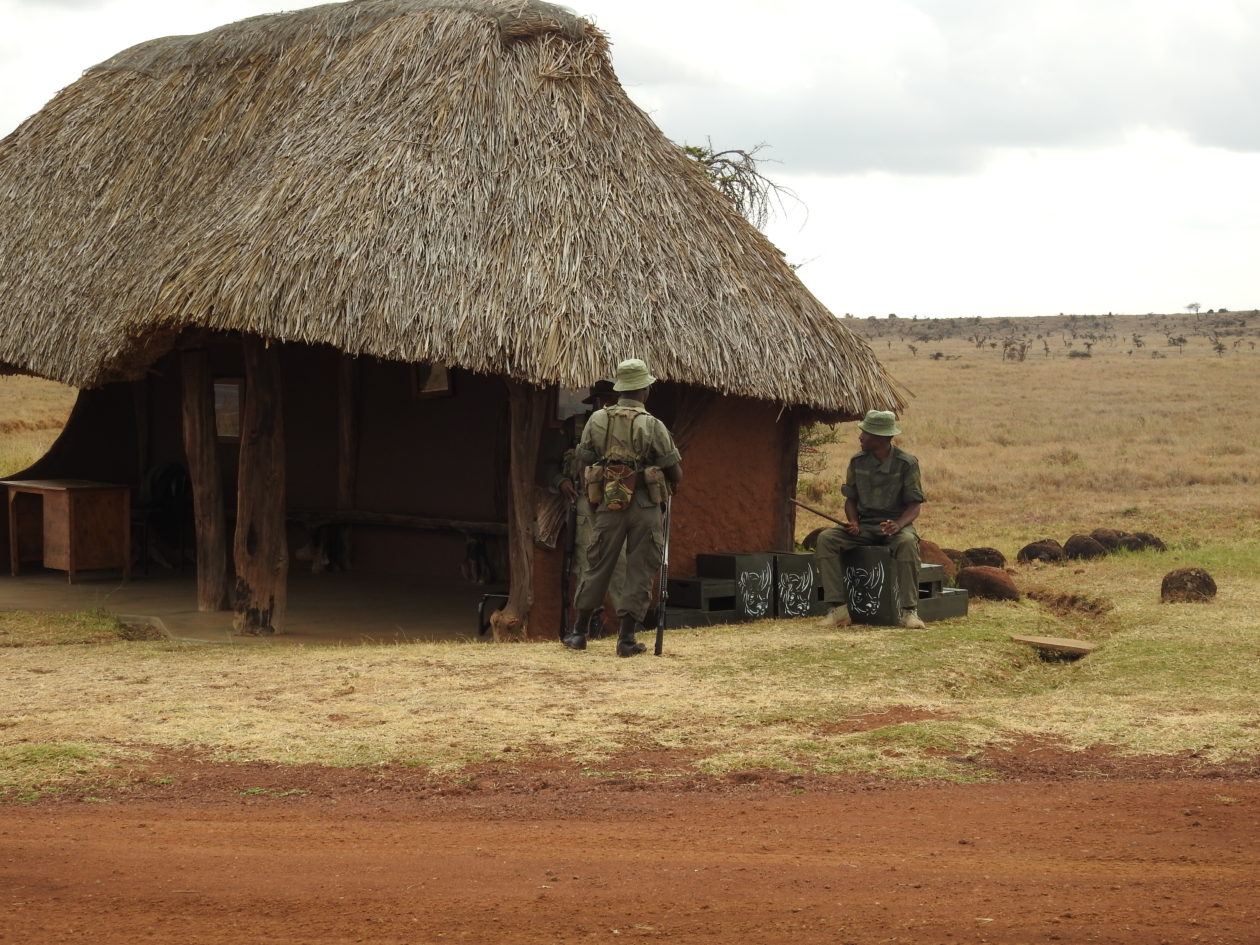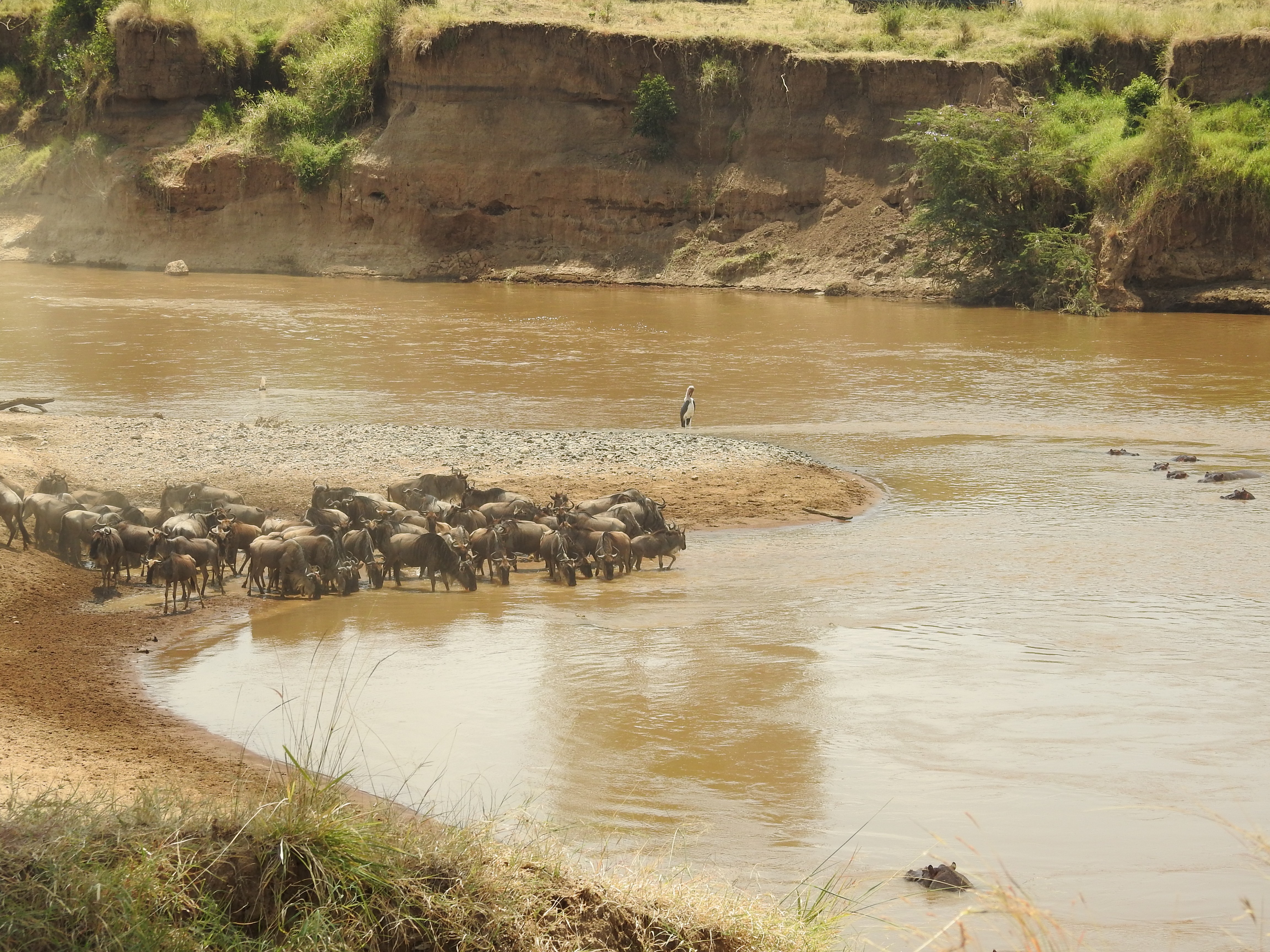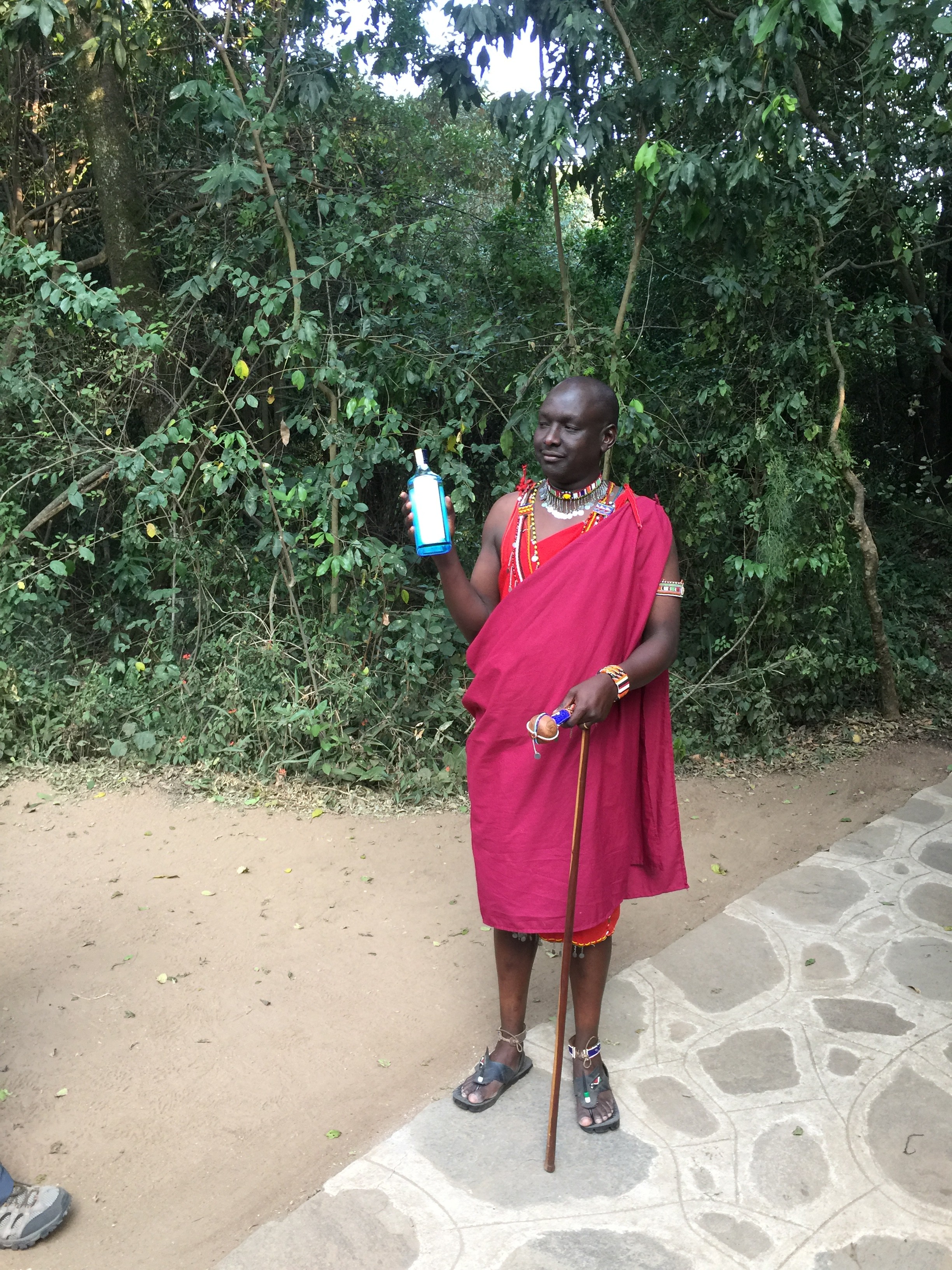- Nairobi, Kenya
- Amboseli National Park, Kenya
- Meru National Park, Kenya
- Lewa Wildlife Conservancy, Kenya
- Masai Mara National Park, Kenya
- Zanzibar, Tanzania!
- Arusha, Tanzania
It seems like each new place we go provides a completely different environment and set of experiences. During the past 3 days, Masai Mara has continued that trend in a big way. This was our first location to experience the Great Migration as well as many other “once in a lifetime” experiences. The Maasai Mara National Reserve is a large game reserve (around 580 sq. mi.) contiguous with the Serengeti National Park in Mara Region, Tanzania. It is named in honor of the Maasai people (the ancestral inhabitants of the area) and their description of the area when looked at from afar: “Mara,” which is Maa (Maasai language) for “spotted,” a good description for the circles of trees, scrub, savanna, and cloud shadows that mark the area. The park is primarily savannah, although there are some stands of acacia trees. There are also trees and shrubs that line the banks of the Mara, Sand, and Talek Rivers that intersect the park. That is where much of the “action” happens. We actually spent all of our time in the triangle that is bordered by the escarpment and Mara River. The park has grown incrementally since its initial designation as a wildlife sanctuary of 200 sq mi in 1961. Today, it is managed by the Mara Conservancy.
This is a busy place. The “airport” (a dirt strip and a palapa to protect people from the shade seem to have a constant stream of flights coming in and departing. People come here to see its exemplars, including the Masai lions, African leopards and Tanzanian cheetahs. The big draw, however is the annual migration of zebra, Thomson’s gazelle, and wildebeest to and from the Serengeti every year from July to October, known as the Great Migration. Well, we hit it just right. Had we come a few weeks earlier, we would have seen very few wildebeest. As it was, there had to be several hundred thousand wildebeest in the area, as well as lots of the other migrating animals including zebras, Thomson’s gazelles, elands, and Topis. As I understand the numbers, the total migration involves some some 1,300,000 wildebeest, 500,000 Thomson’s gazelles, 97,000 Topi, 18,000 elands, and 200,000 zebras! Needless to say, the lions, leopards, hyenas, crocodiles, and scavenger birds are thrilled for this time of year since they will be eating well. In addition to the animals participating in the migration, there are several animals like elephants, hippos, rhinos, impalas, antelope, etc. that are full-time residents.


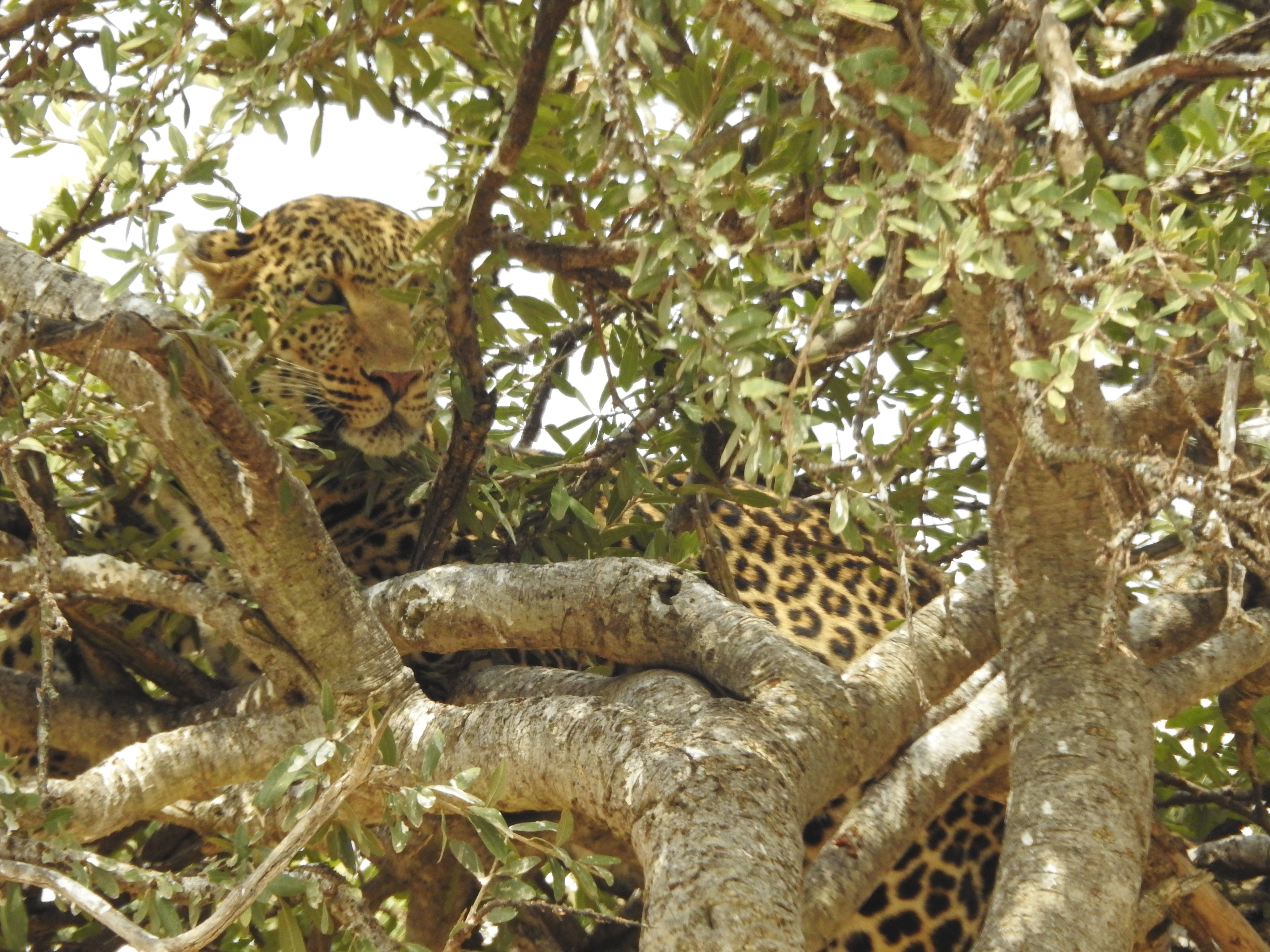
As in other parks, ended going out on morning and evening game drives since the early morning and and late evening/night are the most active time for hunting. Our guide, Timothy, a member of one of the local Masai tribes was masterful. He taught us a lot about the habits of the local animals and the Migration, as well as the culture and customs of the Masai. He also asked us what we wanted to see, to which we responded seeing lions, leopards, a crossing, and a hunt. Amazingly, in the three days, we actually got all of that done!
There were several dramatic moments during our stay. The first involved a lioness that had somehow gotten separated from her two cubs with her on one side of the rushing river and her cubs on the other. Making this more difficult was the fact that the river had both two crocodiles and some hippos making it almost impossible for her to make it to them. It also turns out that the dominant male of their pride had departed and there were two other males that were trying to assert dominance. One of the first things the new dominant males will do when they take over is to kill all of the cubs sired by the previous male. We watched for over an hour as the lioness paced back and forth, cried out to her sisters for help (none came), and tried to keep the Cubs from jumping in the water. We don’t know how the episode eventually ended.
The next amazing event was the crossing. While seeing the hundreds of thousands of wildebeest is a routine occurrence as part of the migration, seeing them “run the gauntlet’ across the Mara River is apparently pretty rare. I say “run the gauntlet” because all the migrating animals have to be able to swim through the strong current and avoid the crocodiles (and sometimes lions) that are waiting for them. It is truly an all-or-none proposition. We were fortunate enough to see the crossing here. The crocodiles were waiting both on shore and in the water. There were also lots of hippos around, but they seem to be more or less bystanders. After three times of running to the edge of the water and running back, the backpressure forced them into the water and they struggled to get across. By our count, two wildebeest were caught by the current and taken down by the crocs. The last animal (a zebra) kept slipping on the rocks. The crocodile came within 3 feet of him when the zebra finally made it. Everyone in the assembled crowd cheered!
The last amazing event was the night hunt. Up to this point, we had seen both lions and leopards lolling or sleeping under trees during the day. Now it was time to see them in action! We started by watching a leopard across the river stalking a group of wildebeest at dusk. To make a long story short, after a long stalk, the leopard missed. We then track a number of lions in the dark using a red spotlight. We were right in the thick of things. In fact, at one point we were surrounded by 9 lions — none of which were more than 15 feet away! After one female missed, a second successfully took down a wildebeest. They actually smother them by putting their mouth over the wildebeest’s mouth and nose. It took about 5 minutes for it to be over. Then came the part that made all the men cringe. The lioness flipped the wildebeest over and proceed to rip off and eat the male dangly bits. That’s all she ate. Then she turned around and walked away, theoretically leaving the kill for the rest of the pride. Nature is cruel!



We stayed at the Bateleur Camp, which is situated on the western border of the Maasai Mara National Reserve. Set on some private property leased from the Maasai landlords, the camp lies at the base of the Oloololo escarpment just below the spot where one of the most famous scenes in the movie “Out of Africa” was shot. This was the most elegant of the camps we have stayed in to date. There are only 9 tents housed under shingled roofs, with decks that overlook the Mara with all the action that goes on there. One morning we awoke to find a couple of warthogs peering in on us! The staff here were also wonderful and very accommodating. The highlight of the stay was a bush dinner out in an isolated spot, complete with dances from the local Masai tribe. Of course, Glen was plucked from the crowd to participate with the dancers!
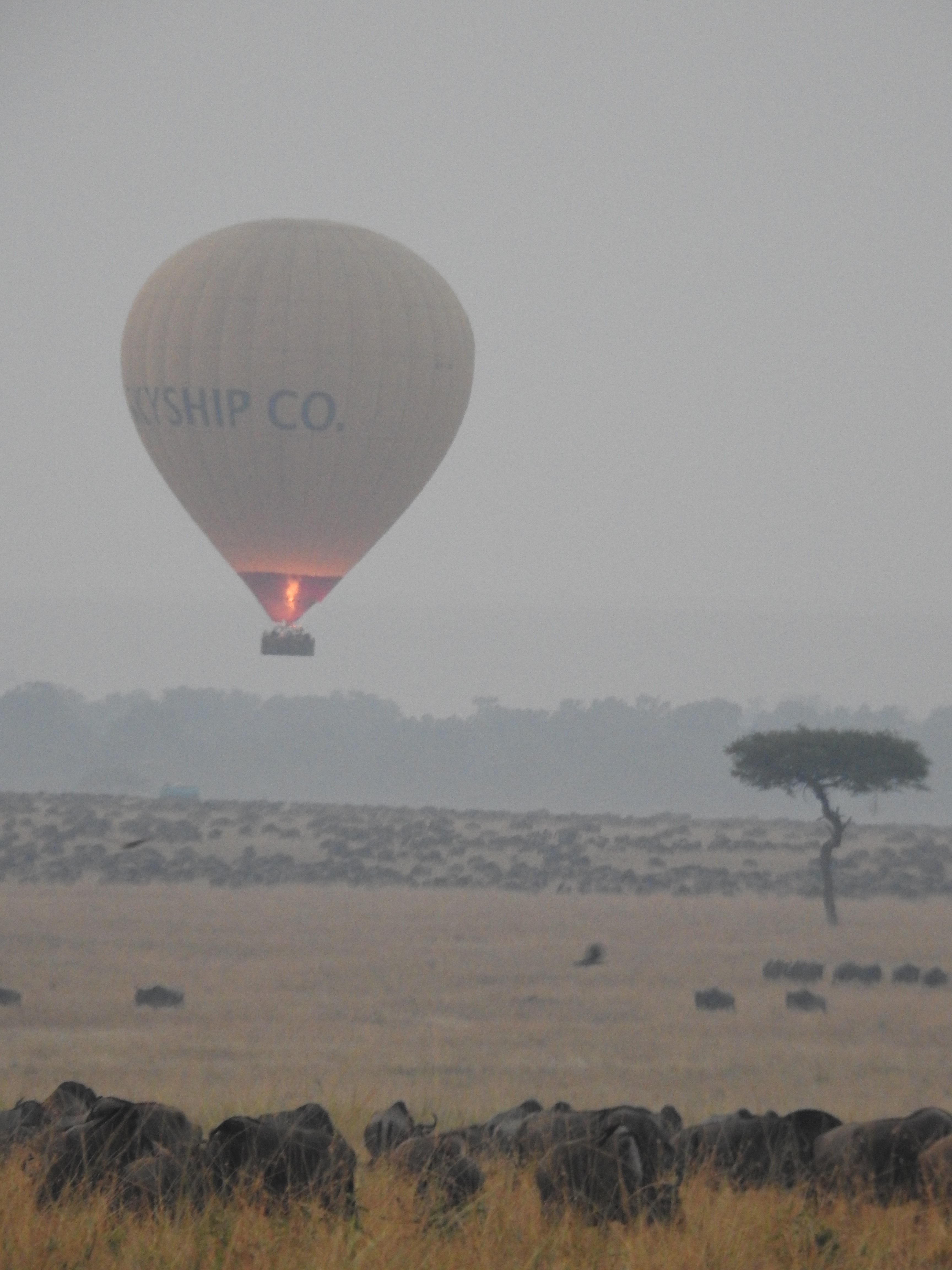


All in all, the stay at Masai Mara was the most impactful to date. It will be interesting to see how Serengeti National Park will compare since it is adjacent to the Masai Mara.
